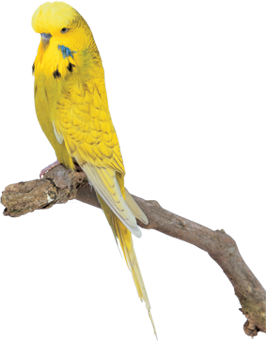Articles
Budgerigar best bird for breeding…
Small, relatively easy to care for and blessed with a terrific and friendly personality it's no wonder the budgie has become the world's most popular pet bird.
It's no coincidence either that an ever-increasing number of bird lovers are taking this interest one step further and are becoming involved in breeding these beautiful birds.
However, breeding budgies involves a lot more than just getting some eggs and waiting for them to hatch and many new comers to the industry don't know where to start. Here are a few tips to help you turn your breeding dream into reality.
Where do I start?
The most important decision you will have to make is how you are going to breed your birds. The most popular methods of breeding budgerigars are known as "controlled" and "uncontrolled" breeding.
Breeders who show and provide birds solely for exhibition purposes usually use the controlled breeding method which effectively means they decide when the cock and the hen are put together into a breeding cage, and therefore when they are going to breed.
This process opens the door for more successful breeding because of the perfect breeding condition of the stock. Without this type of control, it becomes increasingly likely that infertile eggs or weak, unhealthy chicks will be produced.
Uncontrolled breeding means the timing of the breeding process is basically left up to the birds to decide. While this is certainly a more natural approach, it can result in some minor imperfections in the chicks which are not necessarily sought after or wanted by the buying public.
What to do
One of the most common mistakes in breeding is putting the birds together before "they are ready". Breeding for any bird before it is mature can be detrimental to its health as it reduces the energy reserves used for growth and development.
The easiest way to tell if a male bird is ready for breeding is to look at the cere which should be blue and shiny, while the hen's cere should be a deep brown with a rough look.
For best breeding results, make sure both the cock and the hen are in excellent health before they begin. If the pair is in good breeding condition, the first egg will appear about 10 days after copulation with the rest following on alternate days. The total incubation period should last about 18 days.
New homes for baby birds
At four to five weeks the chicks are fully fledged but will still be reliant on their parents for food for another two weeks or so.
When the time comes to remove them from the nest, it is important to remember that chicks are easily distressed so any relocation is best done in the morning when there is plenty of daylight to help them become accustomed to their new surrounds.
Sexing
Sexing birds is a difficult task at the best of times and is best done when they are still chicks as the visible signs are more prominent. Once again, the secret to sexing chicks is based on the cere - the hen's cere is white while the cock's is pink.
Identification
Most breeders use closed metal or plastic rings to help identify their chicks. These rings are usually placed on the chick's leg when they are between five and 10 days old and are usually coloured or engraved to help identify the individual bird, it's sex, its parents or even its siblings.
